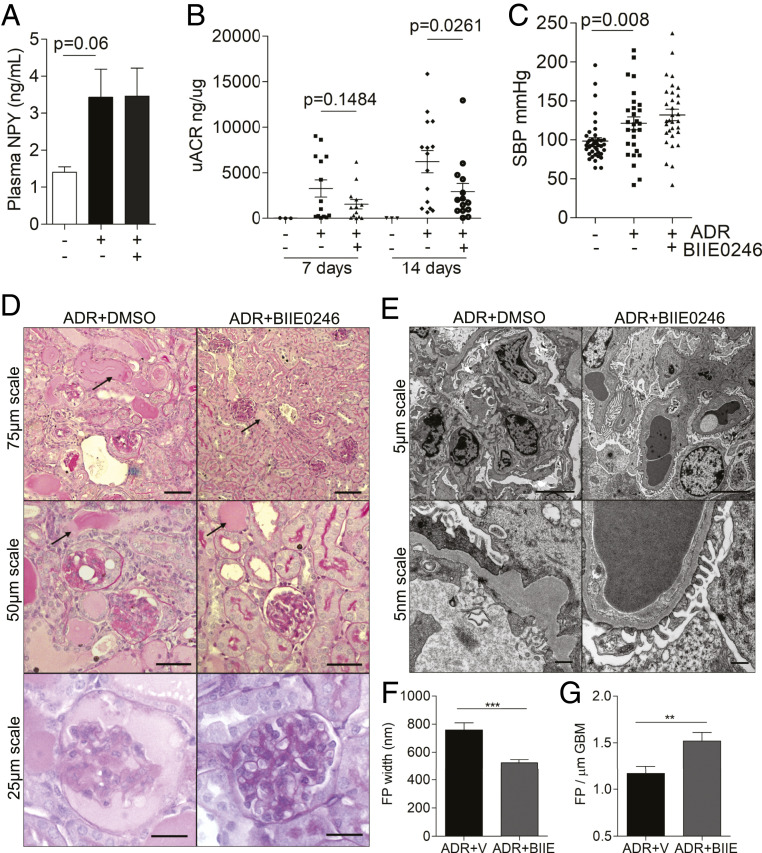Fig. 8.
BIIE0246 treatment reduces albuminuria in ADR nephropathy. Adriamycin was administered to male BALB/c mice at 6 mg/kg via a single i.v. injection under mild anesthesia, and the effects of NPY2R inhibition were investigated. Control mice were treated with equivalent volumes of distilled water (adriamycin vehicle) and dimethylsulfoxide (BIIE0246 vehicle). (A) Plasma NPY levels (ng/mL) in male BALB/c mice treated with adriamycin (n = 8) or adriamycin in combination with the NPY2R antagonist BIIE0246 (n = 4). (B) uACRs in mice treated with adriamycin (n = 15), adriamycin plus the NPY2R antagonist BIIE0246 (n = 14), or vehicle (n = 3). A significant reduction in albuminuria is observed in the ADR+BIIE0246 group, compared with ADR+Vehicle group at 14 d. (C) A significant increase in SBP was observed in ADR-treated mice (**P = 0.0087) which was not influenced by NPY2R inhibition (P = 0.3260). (D) PAS staining demonstrating a reduction in the severity and extent of glomerular sclerosis and tubular dilation/protein accumulation in the ADR+BIIE0246 mice, although evidence of tubular dilation and protein casts can be seen in both ADR-treated groups (black arrows). (E) EM images of ADR+Vehicle- and ADR+BIIE0246-treated mice, demonstrating a significant loss of podocyte architecture. (F) Quantification of FP width. ***P < 0.001. (G) Number of FPs per GBM length, indicating a significant reduction in FP effacement in ADR+BIIE0246-treated mice compared to ADR+Vehicle treatment; n = 3 mice >20 regions per mouse. **P < 0.01.

